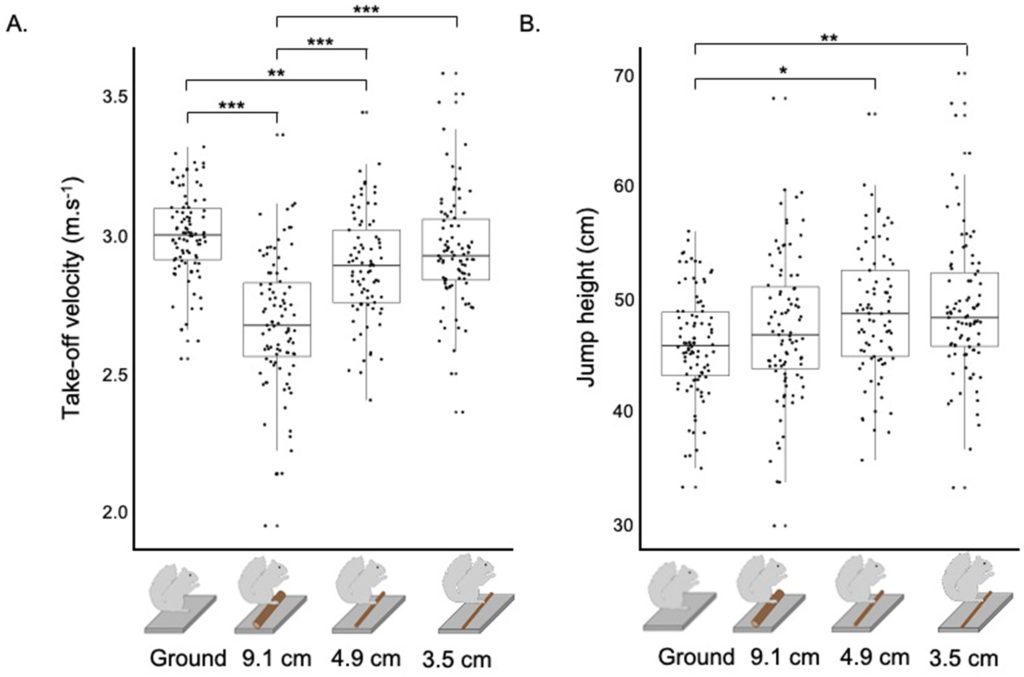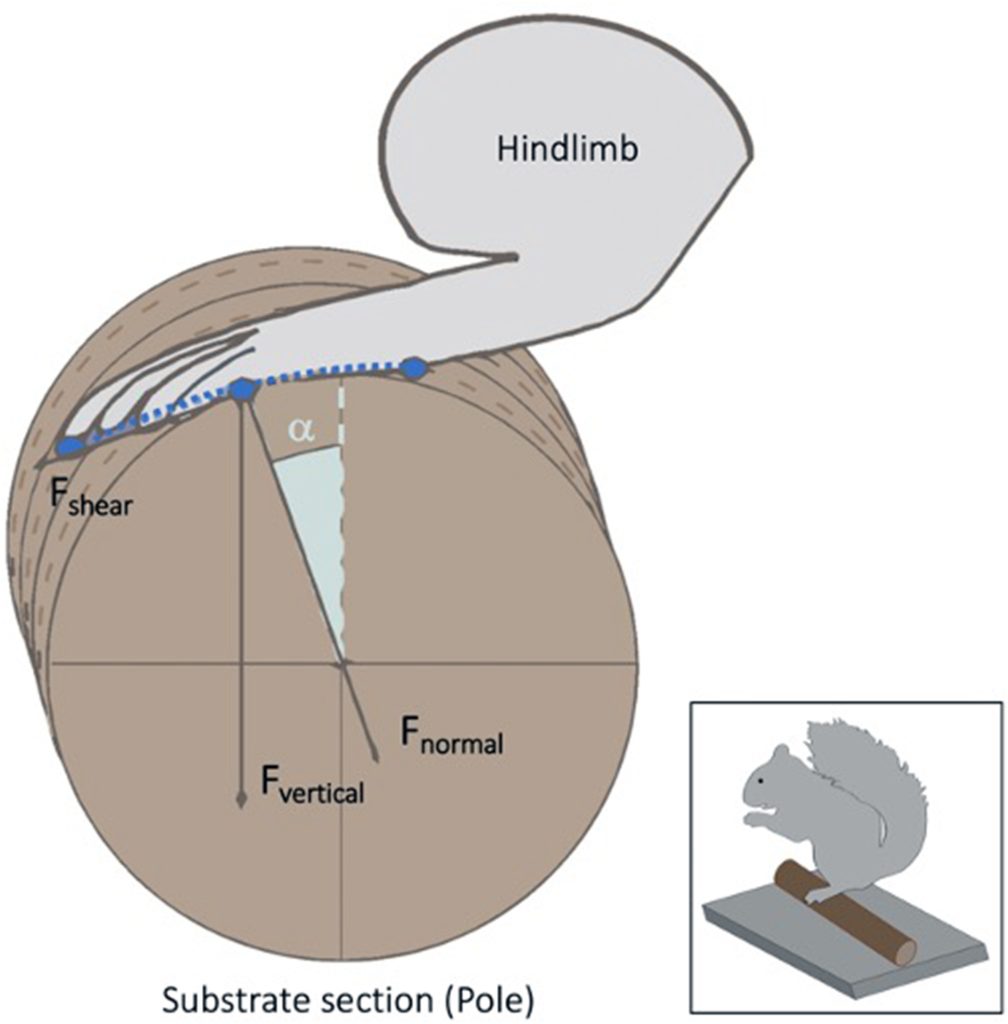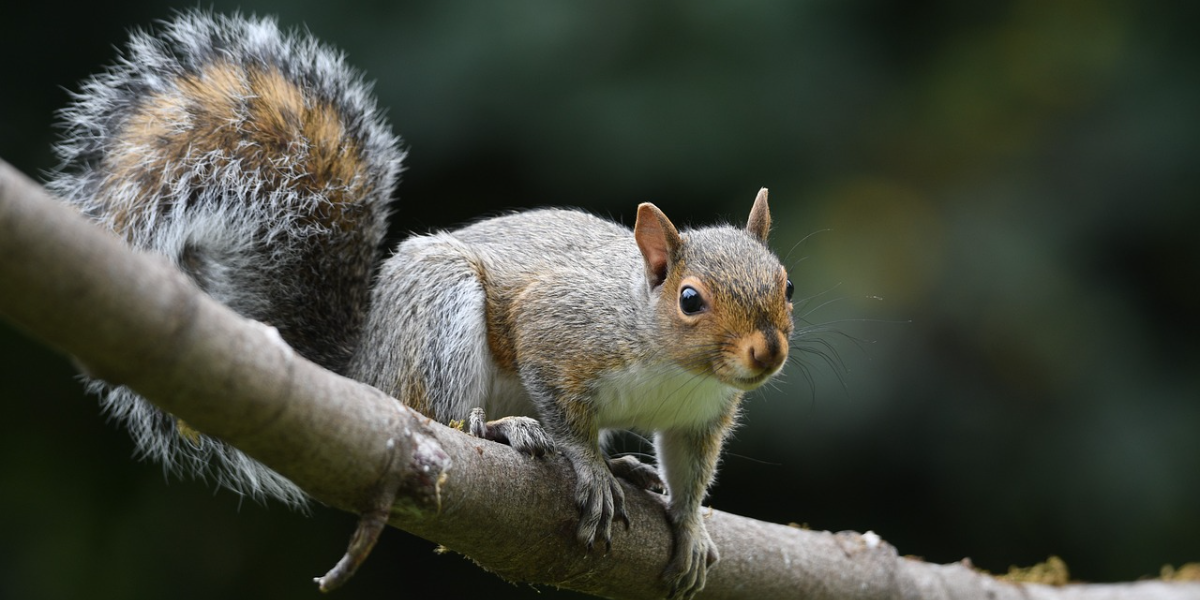How do squirrels escape dogs, scavenge for food, and climb their way around trees? The answer is simple: squirrel parkour. With precise calculations and the physical ability to maneuver and adjust, squirrels can effortlessly leap from tree branch to tree branch without falling.
A study done by Nathaniel Hunt et al. tested squirrels on different activities where gap distance, flexibility of the launching bar, and gap height were varied. The squirrels were observed, and results showed a consistent trade-off scenario between branch flexibility and leap distance. When on high-flexibility branches, squirrels jumped closer to the branch connection point. This led to large gap lengths, up to three times the squirrel’s body length. The opposite was true for low-flexibility branches. Squirrels are able to determine branch flexibility and what launch point is necessary for them to safely make leaps to neighboring branches.
In terms of safety, throughout the course of the experiments, the researchers observed that not a single squirrel fell. They were able to successfully adjust to varying branch flexibility, height, and leap distance. The squirrels were able to accomplish this feature by performing a “parkour” move. The squirrels jumped off the branch toward a nearby wall and sprang off of it before landing. The squirrels utilized this parkour move to adjust their landing speeds. Not only does this demonstrate the adaptability of squirrels, but also their ability to adjust their bodies while jumping.
An important concept to consider when looking at mechanics of squirrels jumping is the force and speed at which they take off. Grégoire Boulinguez-Ambroise et al. completed a study to examine the effects of different branch sizes on squirrel take-off velocity and the displacement of their center of mass. Results showed that there was a difference between squirrels jumping upwards off of a flat plate, and off of a branchlike object. When jumping off the branchlike poles, squirrels prioritized shifting their center of mass to jump, whereas on the flat plates, priority was given to the produced force. These results imply that while on branches, squirrels try to maximize balance before jumping. This intuitively makes sense as you would want to be as balanced as you could before making a leap!

Interesting results, shown in Figure 1, showed that squirrels jumped the highest while jumping from the smaller diameter branch, and jumped the lowest when jumping from flat ground. Putting this together with the previously mentioned idea of squirrels shifting their center of mass, squirrels are able to adjust their approach to jumping depending on branch sizes.

Based on the size of the branch, squirrels have to adjust their feet position. For smaller branches, squirrels must place the middle of their feet closer to the sides of the branch. Figure 2 shows the forces acting between the feet and the branch. Varying branch sizes will change the angles and size of the forces, and the squirrel will have to adjust accordingly. In the study mentioned above, results showed that the feet placement on the varying diameter sizes did not have a significant impact on the measured take-off velocity. This implies how squirrels can adjust to different sized branches and still maintain high quality jumping performance.
Diving into how squirrels jump, they use their hind limbs to push themselves off of an object. Richard Essner completed a study on squirrel launch kinematics. Results showed that for leaping, squirrels act as small-bodied primates and rely less on their knees than their ankles. Squirrels also use their tails to help with balance.
While squirrels may seem like cute animals who only care about adding to their nut collection, there is a lot more than meets the eye when it comes to their movement between and through trees. The nature of squirrels to be able to apply the parkour move, change foot placement, determine the flexibility of branches, and adjust take-off velocity depending on each individual branch they leap from are just a few of the amazing features that squirrels can accomplish.
Feature image from Pixabay.
